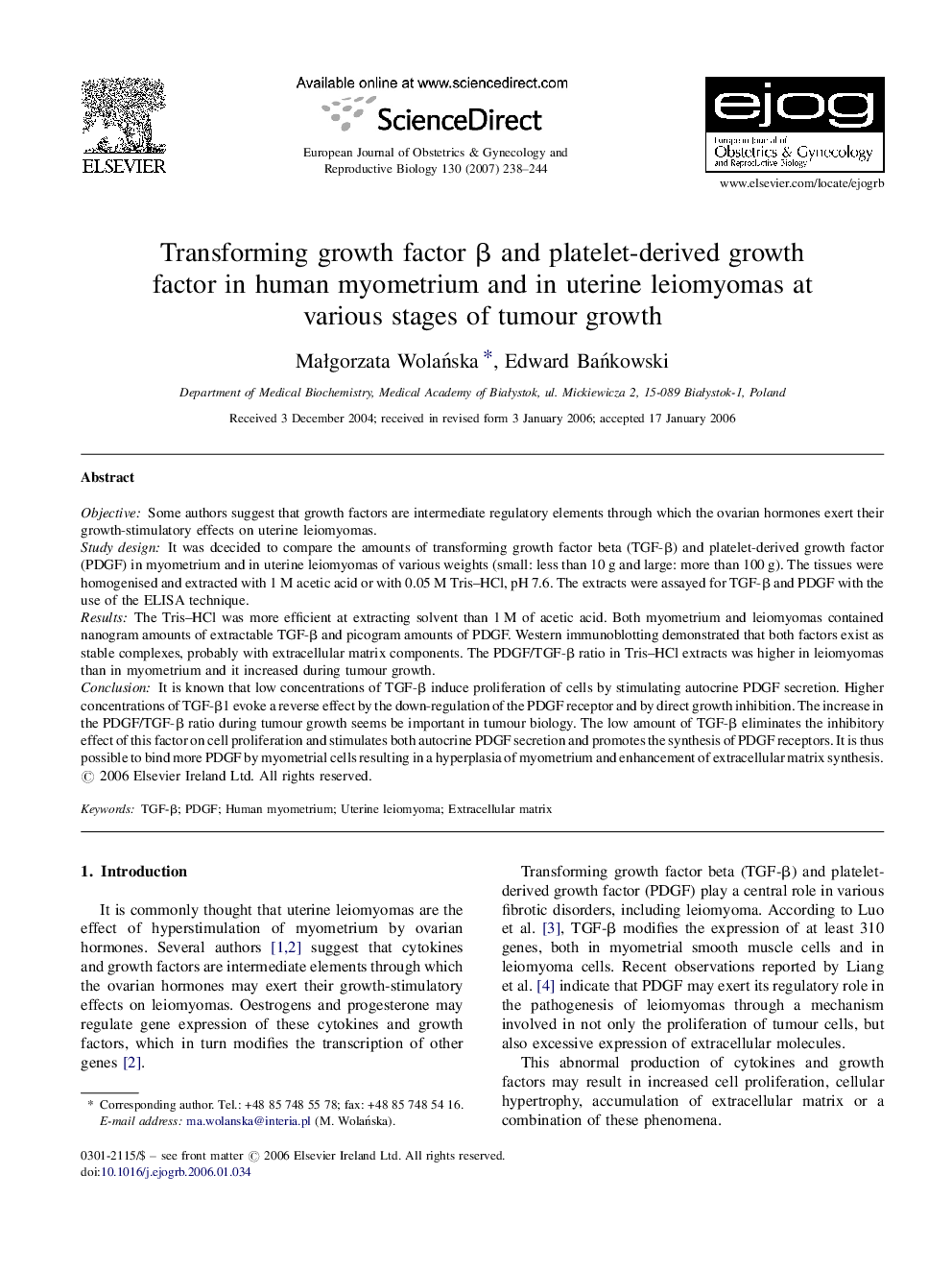| Article ID | Journal | Published Year | Pages | File Type |
|---|---|---|---|---|
| 3921397 | European Journal of Obstetrics & Gynecology and Reproductive Biology | 2007 | 7 Pages |
ObjectiveSome authors suggest that growth factors are intermediate regulatory elements through which the ovarian hormones exert their growth-stimulatory effects on uterine leiomyomas.Study designIt was dcecided to compare the amounts of transforming growth factor beta (TGF-β) and platelet-derived growth factor (PDGF) in myometrium and in uterine leiomyomas of various weights (small: less than 10 g and large: more than 100 g). The tissues were homogenised and extracted with 1 M acetic acid or with 0.05 M Tris–HCl, pH 7.6. The extracts were assayed for TGF-β and PDGF with the use of the ELISA technique.ResultsThe Tris–HCl was more efficient at extracting solvent than 1 M of acetic acid. Both myometrium and leiomyomas contained nanogram amounts of extractable TGF-β and picogram amounts of PDGF. Western immunoblotting demonstrated that both factors exist as stable complexes, probably with extracellular matrix components. The PDGF/TGF-β ratio in Tris–HCl extracts was higher in leiomyomas than in myometrium and it increased during tumour growth.ConclusionIt is known that low concentrations of TGF-β induce proliferation of cells by stimulating autocrine PDGF secretion. Higher concentrations of TGF-β1 evoke a reverse effect by the down-regulation of the PDGF receptor and by direct growth inhibition. The increase in the PDGF/TGF-β ratio during tumour growth seems be important in tumour biology. The low amount of TGF-β eliminates the inhibitory effect of this factor on cell proliferation and stimulates both autocrine PDGF secretion and promotes the synthesis of PDGF receptors. It is thus possible to bind more PDGF by myometrial cells resulting in a hyperplasia of myometrium and enhancement of extracellular matrix synthesis.
